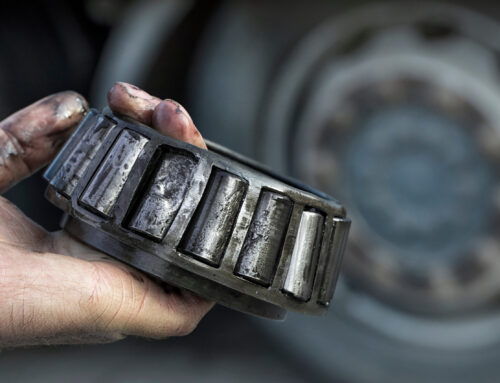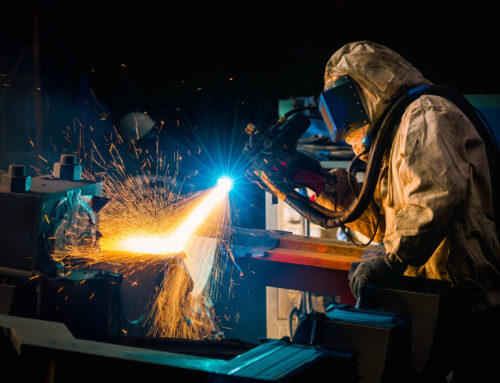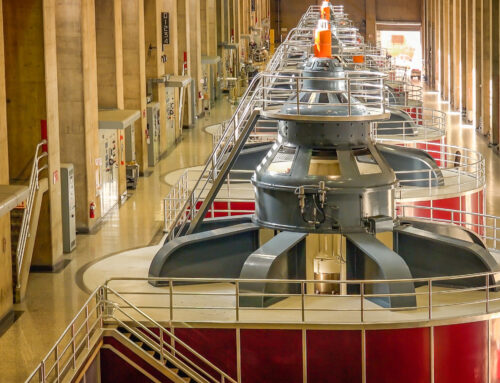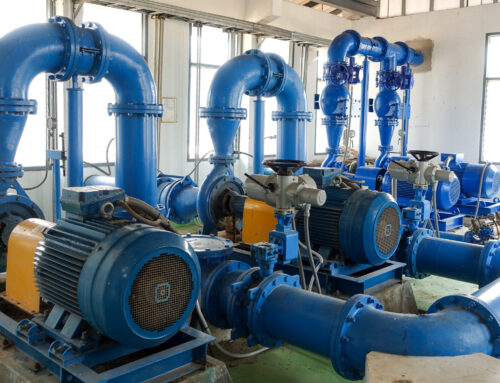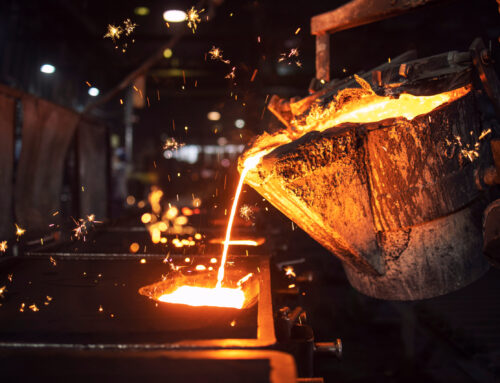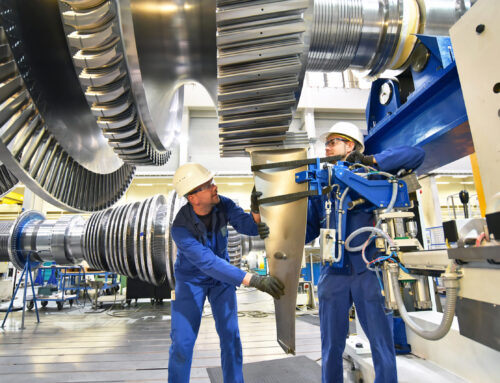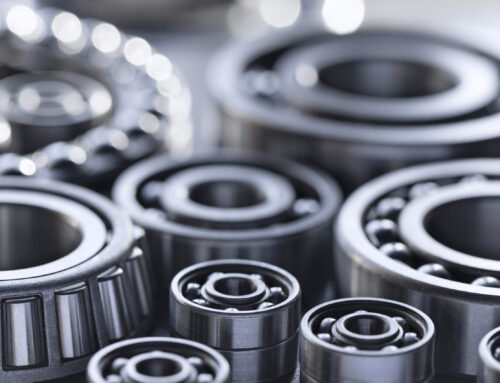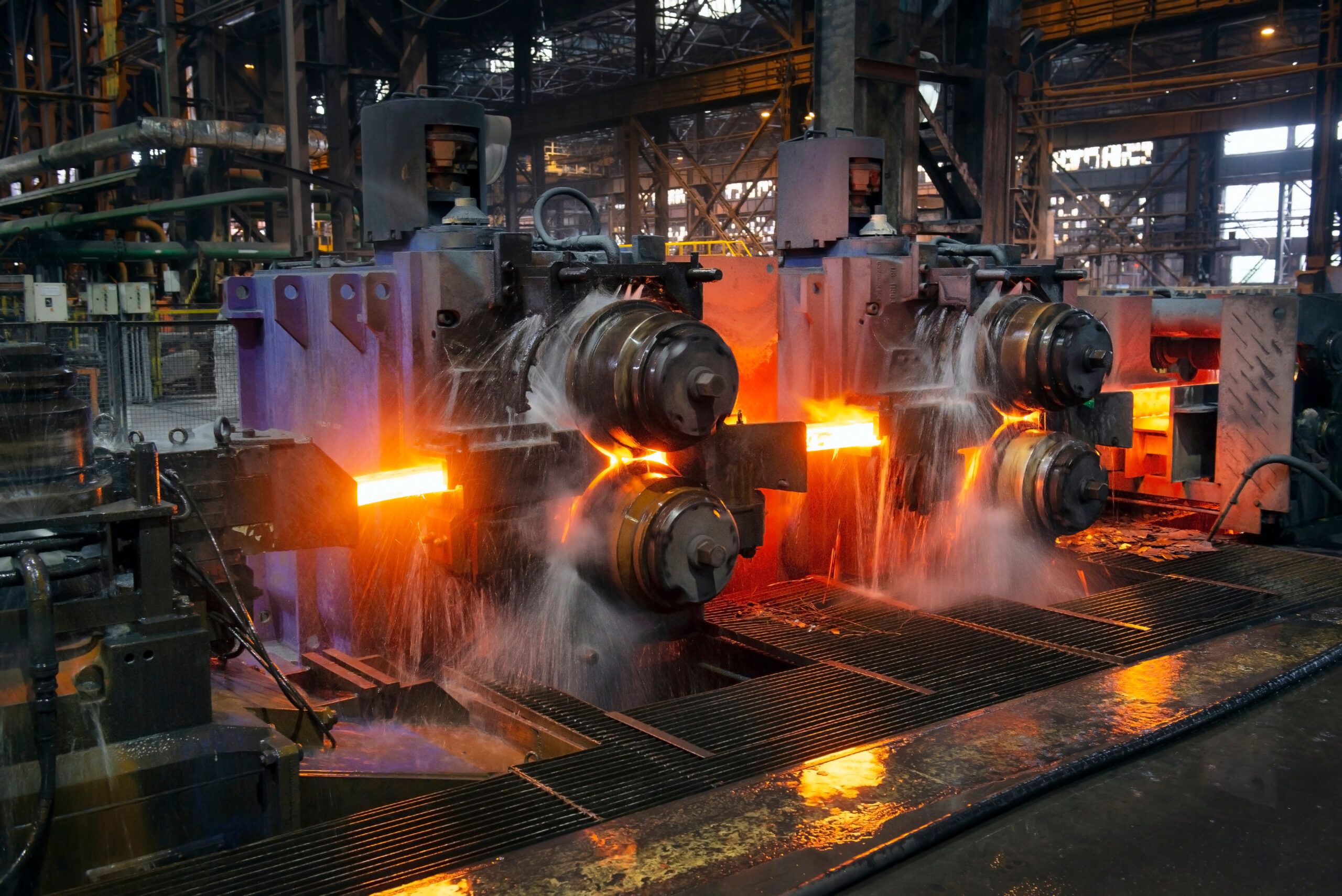
Win your next outage with a practical plan for mill bearing repair
When a mill goes down, the clock starts ticking. Every hour counts, and the quality of your mill bearing repair can make or break the schedule. The best way to control risk and avoid costly delays is to use a simple sequence that crews can follow without confusion. Pull the bearing. Inspect it. Decide the next steps. Then execute. This practical approach reduces uncertainty, shortens downtime, and keeps your team aligned from start to finish.
Fusion Babbitting Co., Inc. has supported planned and emergency outages across the country since 1988. From rebabbitting to reverse engineering, Fusion Babbitting brings the experience and capacity to help you pull, inspect, and decide fast. With 24-hour emergency service and advanced centrifugal casting, the team delivers mill bearing repair that meets or exceeds OEM specifications while protecting your schedule.
Why the pull, inspect, decide sequence works
Complex outages fail when too many steps compete for attention. A clear, three-part sequence gives your team a shared roadmap. It works because it aligns technical needs with schedule control, and it sets predefined decision points that stop scope creep. The result is fewer surprises and faster return to service.
- Pull: Get the bearing out cleanly, safely, and with complete documentation.
- Inspect: Measure, test, and confirm the real condition against tolerances.
- Decide: Choose repair, rebabbitting, rebuild, or replace based on facts, not guesswork.
When you combine this sequence with a proven mill bearing repair partner like Fusion Babbitting, you gain speed, quality assurance, and clear communication from planning to startup.
Pre-outage preparation that keeps your schedule safe
Build your outage checklist
Preparation drives speed. A clean pull and a reliable inspection both rely on smart planning. In the week leading up to your outage, build a checklist that includes critical tools, consumables, and roles. Assign a decision owner ahead of time for each major call, such as rebabbitting versus replacement.
- Confirm lifting plans, rigging gear, and safe access points.
- Stage clean, labeled containers for shims, hardware, and seals.
- Prepare alignment targets and record baseline values.
- Pull recent vibration, temperature, and oil analysis data.
- Define pass or fail criteria for thrust faces, diametral clearances, and bond integrity.
- Pre-authorize a rapid shipment path to Fusion Babbitting if rebabbitting is required.
Stage spares and documentation
Having the right parts staged saves days. Label spares to match positions and orientations. Verify that drawings and historical repair data are accessible to the team. If the bearing is obsolete, coordinate with Fusion Babbitting for reverse engineering support. The Milwaukee facility can produce detailed drawings and create precise replicas when OEM parts are no longer available.
Step 1: Pull the bearing cleanly and capture the evidence
A quality inspection depends on the way you pull the assembly. Contamination, mixed hardware, and lost shims lead to errors later. Treat the bearing pull like a controlled operation with clear roles and verification steps.
Best practices for a controlled pull
- Photograph before disassembly. Capture orientation, oil feed paths, and fillet details.
- Mark positions. Use punch marks or paint dots to maintain top and bottom shell orientation.
- Bag and tag hardware. Keep bolts, shims, and seals grouped by location.
- Protect the surfaces. Use clean lint-free cloths and protective covers the moment the shell is free.
- Sample the oil. Send a sample for analysis to document varnish, water, or wear metals.
- Record measurements. Note axial float, alignment targets, and installation clearances before removal if possible.
Fusion Babbitting can advise on pull procedure details during pre-outage planning. Clients often share photos and quick measurements with the Fusion Babbitting team in real time so decisions can form while the assembly is in transit.
Step 2: Inspect with a repeatable method
A thorough inspection is not guesswork. Use a structured method that covers bearing geometry, babbitt condition, housing condition, and journal or sleeve condition. Compare all findings to your acceptance criteria and OEM or site standards.
What to look for on the bearing surface
- Babbitt wipe patterns. Identify light wiping versus heavy wipe and evidence of wiping toward the load zone.
- Surface distress. Look for scoring, pitting, cavitation, corrosion, and foreign object damage.
- Bond integrity. Check for bond line separation or lifted babbitt, especially at edges and oil grooves.
- Crack detection. Use dye penetrant where appropriate to find hairline cracks.
- Groove and dam condition. Verify that oil grooves, dams, and flood paths are intact and not smeared.
- Thrust faces. Inspect for uneven wear, burrs, and localized hotspots.
Dimensional checks that guide the decision
- Measure diametral clearance and compare to spec.
- Check ovality and taper across multiple clock positions.
- Verify housing bore condition and seating faces.
- Confirm journal diameter, roundness, and surface finish.
- Assess contact pattern with bluing as needed.
Oil and temperature clues you should not ignore
Oil analysis helps confirm the root cause. Elevated tin, lead, or copper can point to babbitt wear. Water or high acid number suggests contamination. Localized temperature increases seen in historian data often align with mounting issues, blocked oil paths, or loss of clearance. Feed these clues into your decision tree before reassembly.
Fusion Babbitting uses non-destructive testing methods and advanced measurement to confirm bond strength and geometry during mill bearing repair or rebuild. Centrifugal casting in controlled conditions ensures a strong, consistent bond when rebabbitting is required.
Step 3: Decide quickly with a clear decision tree
Speed is vital once you have the facts. A decision tree removes debate and sets a clock for each path. Decide whether to reinstall as-is, perform in-place repair, ship for rebabbitting or rebuilding, or replace with a new manufactured bearing.
Practical decision criteria
- Reinstall after clean and verify if clearances and bond are in spec and surface distress is minor.
- Field repair if light scoring can be polished and geometry holds tolerance.
- Rebabbitt if bond issues exist, wipe is severe, cracks are present, or geometry is out of tolerance.
- Reverse engineer and manufacture new when the base material is compromised or the bearing is obsolete and past economic repair.
Fusion Babbitting can support all four outcomes. The shop provides fast-turn rebabbitting, rebuilds with arc flame spray for worn fits, precision machining, and brand-new manufacturing when needed. For obsolete parts, the reverse engineering team creates detailed drawings and accurate replicas to restore your mill to service.
How Fusion Babbitting keeps your outage on schedule
Established process for mill bearing repair
Since 1988, Fusion Babbitting has refined a repeatable process for mill bearing repair that meets or exceeds OEM specifications. The team uses certified Babbitt materials, precise centrifugal casting, and thorough inspection at every step. This process is built to protect uptime and keep your outage moving.
Capacity and equipment that match heavy industry
The Milwaukee facility handles components up to 120 inches in diameter and length. That means aluminum mills, paper mills, cement plants, and mines can send large bearing shells, housings, and sleeves without delay. With 24-hour emergency service, Fusion Babbitting can intake, assess, and start repairs day or night.
Full-spectrum services in one place
- Repair, rebabbitting, and rebuilding to restore performance.
- Centrifugal casting for strong bond strength and consistent babbitt thickness.
- Arc flame spray to restore worn journals and housings to spec.
- Reverse engineering for obsolete or undocumented bearings.
- General fabrication and machining to complete the job in-house.
- New manufacturing for OEMs and end users who need custom, high-precision products.
With everything under one roof, Fusion Babbitting reduces handoffs and shortens turnaround, which is critical for outage control.
Industries and applications served
Fusion Babbitting supports mill bearing repair and related services for a wide range of industries across the United States.
- Aluminum mills
- Cement and chemical plants
- Fossil and nuclear plants
- Hydro and pump storage
- Marine repair and shipyards
- Mines and steel mills
- Motor repair shops
- Paper mills
- Crushed stone producers
Typical applications include electric motors, pumps, turbines, hydro power systems, and other rotating equipment that rely on precision babbitt bearings.
Outage logistics that save hours
Shipping, labeling, and communication
Fast logistics amplify a good decision. Label each component clearly with equipment ID, bearing position, and orientation. Use sturdy crates and protective wrap to prevent handling damage. Include drawings, measurement data, and recent operating history inside the crate. Notify Fusion Babbitting before shipment so the team can schedule machine time and prepare materials. The faster the intake, the faster the repair.
Spare strategy and interchangeability
Build a spare program for critical mills. Interchangeable bearing pairs reduce outage time by allowing swap and go installation while the removed bearing goes out for rebuild. Fusion Babbitting can match bore sizes and establish controlled clearances across a spare set so you can maintain clear interchangeability and predictable performance.
Quality control that stands up to real loads
Your mill does not care about promises. It cares about fit, bond, lubrication, and load. Fusion Babbitting validates quality through process controls and inspection. Centrifugal casting creates uniform babbitt with high bond strength. Machining controls restore nominal dimensions and surface finishes. Non-destructive testing verifies integrity. The result is a bearing that installs smoothly, carries load, and runs cool.
Case example: a paper mill outage that finished early
A Midwest paper mill scheduled a 48-hour outage after rising bearing temperatures on a finishing line motor. The site team used the pull, inspect, decide sequence. They photographed the bearing, tagged shims, and pulled an oil sample. During inspection they found light scoring and marginal clearance on one shell. They sent photos and measurements to Fusion Babbitting. Within an hour, the decision was made to send the shell for rebabbitting and light journal restoration with arc flame spray. Fusion Babbitting received the parts that evening, completed centrifugal casting, machining, and inspection, and shipped back the next day. The mill finished the outage four hours early, and temperature stabilized well below the previous trend. The sequence worked because decisions were defined ahead of time and a trusted shop executed quickly.
Frequently asked questions about mill bearing repair
When should I rebabbitt instead of reinstalling?
Choose rebabbitting when you see bond separation, heavy wipe, cracks, or geometry outside tolerance. Also rebabbitt if oil grooves are damaged or if the bearing fails your criteria for surface finish and clearance. If in doubt, share photos and measurements with Fusion Babbitting for a fast recommendation.
How long does a typical rebabbitting take?
Lead times vary by size and scope. With pre-scheduled machine time and approved scope, urgent jobs can move in days. Fusion Babbitting offers 24-hour emergency service and will prioritize critical outages whenever possible.
What if my bearing is obsolete and I have no drawing?
Fusion Babbitting can reverse engineer the bearing. The team creates detailed drawings, models the geometry, and manufactures an accurate replica. This is common in older mills where OEM support no longer exists.
Can worn journals or housings be restored?
Yes. Arc flame spray combined with precision machining restores surfaces to original specifications. This approach extends the life of components and allows proper fit and alignment during reassembly.
How do I prevent repeat failures after repair?
Confirm oil quality, flow, and cleanliness. Validate clearances, alignment, and proper seating. Implement condition monitoring for temperature and vibration. During installation, follow torque sequences and recheck axial float or end play. Fusion Babbitting can advise on best practices for your specific mill.
Outage-ready checklists you can use
Pre-outage
- Collect operating data for the last 30 to 90 days.
- Set acceptance criteria for clearances, bond, and surface finish.
- Stage rigging, tools, and clean work surfaces.
- Prepare labels, bags, and containers for shims and hardware.
- Coordinate shipping and contact Fusion Babbitting for scheduling.
Day-of pull
- Photograph and mark orientation before disassembly.
- Sample oil and record alignment values.
- Protect bearing surfaces immediately after removal.
- Tag all components and log measurements.
- Start preliminary inspection and share findings with your repair partner.
Decision and shipment
- Choose reinstall, field repair, rebabbitting, or new manufacturing using your criteria.
- Crate, label, and ship with drawings and data.
- Confirm receipt and repair plan with Fusion Babbitting.
- Schedule reinstallation and post-repair checks.
Post-repair reassembly
- Verify clearances and surface finish against the report.
- Align, torque, and document settings.
- Prime lubrication and confirm flow.
- Run controlled start-up and monitor temperature trend.
- Update maintenance records with as-left measurements.
Why choose Fusion Babbitting for mill bearing repair
Fusion Babbitting combines experience, equipment, and speed. The company was established in 1988 and is based in Milwaukee, Wisconsin at 4540 W. Burnham St. The team provides nationwide service and supports emergency needs 24 hours a day. From repair and rebabbitting to rebuilding and reverse engineering, every service is designed to reduce risk and protect your schedule. The shop can handle large components and complex geometries, making it a reliable partner for mills and heavy industry.
- Over 40 years of combined expertise focused on bearing performance
- Certified Babbitt materials and controlled centrifugal casting
- Arc flame spray restoration and precision machining
- Reverse engineering and new manufacturing for OEMs and end users
- Fast turnarounds with clear communication and quality reports
Get started with a consult before your next outage
Mill bearing repair does not need to derail your schedule. Use the pull, inspect, decide sequence to keep your outage on track, and work with a partner that can execute quickly and precisely. Fusion Babbitting can review your plan, confirm your decision criteria, and be ready to receive parts the moment you pull them. The result is faster turnaround, dependable quality, and fewer surprises at startup.
Contact Fusion Babbitting Co., Inc. to book a consult or schedule emergency support. Address: 4540 W. Burnham St., Milwaukee, WI 53219. Phone: 414.645.5800 or toll-free at 800.613.5118. Email: sales@fusionbabbitting.com.
Mill bearing repair done right is about sequence, skill, and speed. Pull with care, inspect with discipline, decide with confidence, and trust Fusion Babbitting to deliver the repair quality your mill demands.

